The ADX Parabolic SAR strategy combines ADX and Parabolic SAR indicators for trend analysis and trend reversal identification in Forex, stocks, and commodities. ADX quantifies trend strength, with values above 25 indicating strong trends. Parabolic SAR helps with trailing stops. ADX below 20 suggests weak trends. Combining these indicators improves trend assessment and entry/exit timing. Explore this strategy through a thorough exploration of interpreting signals, best settings, and trading strategies. Understanding the intricacies of these indicators can enhance your market analysis and trading decisions. Start mastering the market with the ADX Parabolic SAR strategy for improved trading outcomes.
ADX Parabolic SAR Strategy Overview
Utilizing the fusion of the Average Directional Index (ADX) with the Parabolic Stop and Reverse (SAR) indicator, the ADX Parabolic SAR strategy offers traders a comprehensive approach to trend following in various financial markets. The ADX measures the strength of a trend, while the Parabolic SAR provides trading signals based on price action. Traders rely on the ADX to confirm the existence of a trend and its strength, while the Parabolic SAR helps in identifying potential trend reversals. By combining these indicators, traders can capture strong trends and manage risk effectively by using the Parabolic SAR as a trailing stop.
The ADX Parabolic SAR strategy is particularly useful for traders seeking to ride trends across different financial markets such as Forex, stocks, and commodities. This strategy not only helps in identifying strong trends but also aids in determining ideal entry and exit points, enhancing overall trading performance. Incorporating moving averages with these indicators can further refine trading signals and improve risk management strategies for traders employing the ADX Parabolic SAR method.
Understanding ADX Indicator
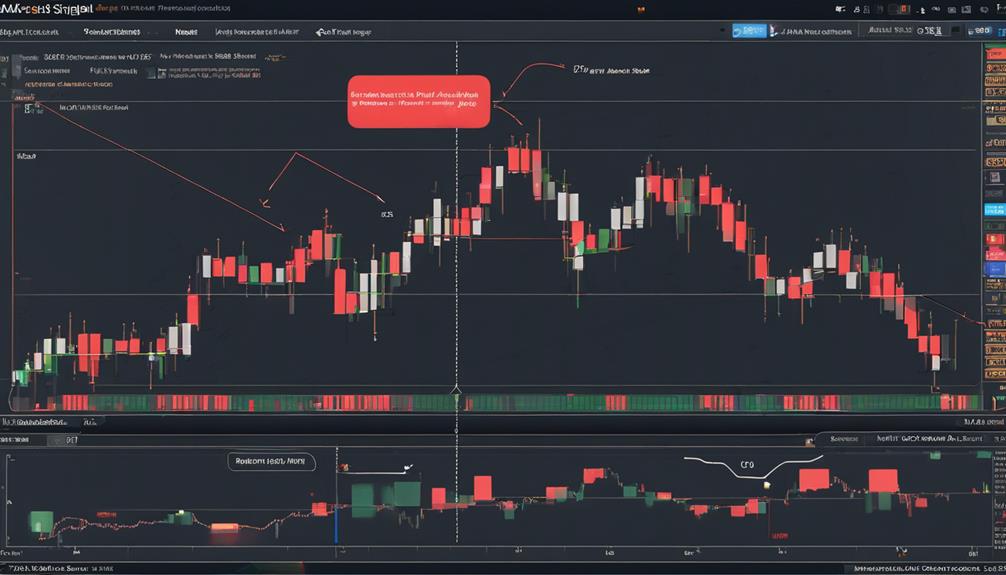
The ADX indicator, or Average Directional Index, is a powerful tool that quantifies the strength of a market trend, irrespective of its direction. With values fluctuating between 0 and 100, traders can gauge the intensity of a trend, with readings above 25 indicating a robust trend and values below 20 suggesting a weaker one.
Understanding the ADX basics and interpreting its signals is essential for traders looking to validate trends and make informed decisions in their trading strategies.
ADX Indicator Basics
Within the realm of technical analysis, the Average Directional Index (ADX) serves as an essential metric for measuring trend strength and forms an integral component of the Directional Movement System. ADX values, ranging from 0 to 100, above 25 indicate a strong trend, irrespective of direction.
Traders often pair ADX with the Plus Directional Indicator (+DI) and Minus Directional Indicator (-DI) to assess trend direction. Understanding ADX aids traders in evaluating trend power, assisting in identifying potential entry and exit points within the market.
Interpreting ADX Signals
Interpreting ADX signals involves deciphering the strength of market trends based on the indicator's numerical values. The ADX indicator ranges from 0 to 100, where higher values indicate a stronger trend.
Values below 20 suggest a weak trend, while those between 20-25 signify a developing trend, and readings above 25 indicate a significant trend. ADX assists traders in identifying trend presence and strength, aiding in determining best entry and exit points.
A rising ADX reflects a strengthening trend, whereas a declining ADX may signal a weakening trend or a potential reversal in the market. Integrating ADX with complementary indicators like Parabolic SAR can refine trend-following strategies and enhance trade precision.
Exploring Parabolic SAR Indicator
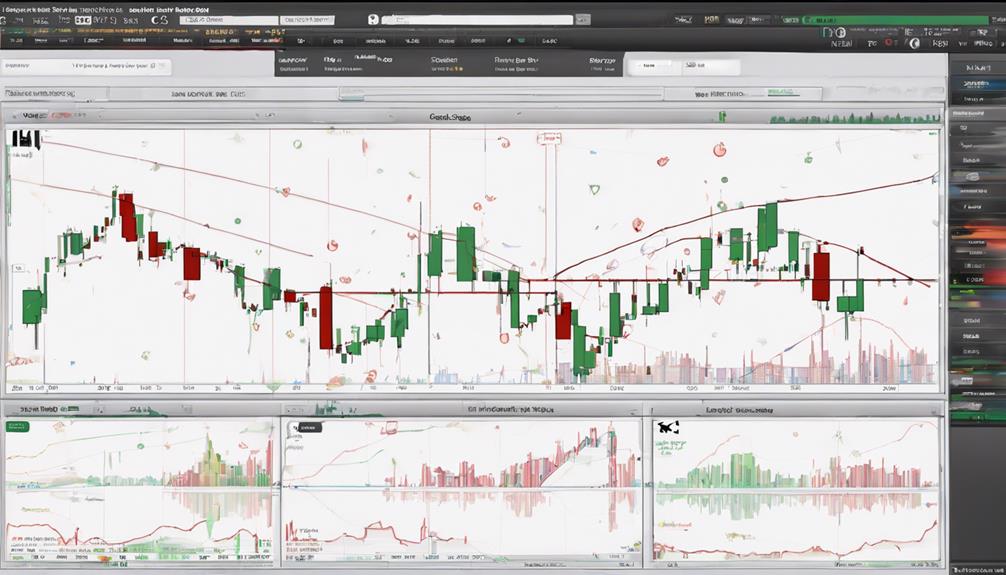
Exploring the functionality and significance of the Parabolic SAR indicator reveals its essential role in identifying potential trend reversals and strategic entry/exit points in trading. Developed by J. Welles Wilder Jr., this indicator calculates SAR values based on the Acceleration Factor (AF) to provide traders with valuable insights into market trends. It is a versatile tool suitable for traders of all levels of experience, aiding in effective position entry and exit strategies.
The Parabolic SAR indicator assists traders by plotting dots on a price chart. These dots help in determining potential trend reversals and strategic entry/exit points. The calculation of the Parabolic SAR involves adjusting SAR values using the AF, with specific formulas applied for different market scenarios such as uptrends and downtrends. Traders can utilize the position of SAR dots relative to the price chart to identify uptrends and manage risk based on SAR signals. Mastering the interpretation of the Parabolic SAR can greatly enhance a trader's decision-making process and overall trading performance.
Calculating ADX & Parabolic SAR
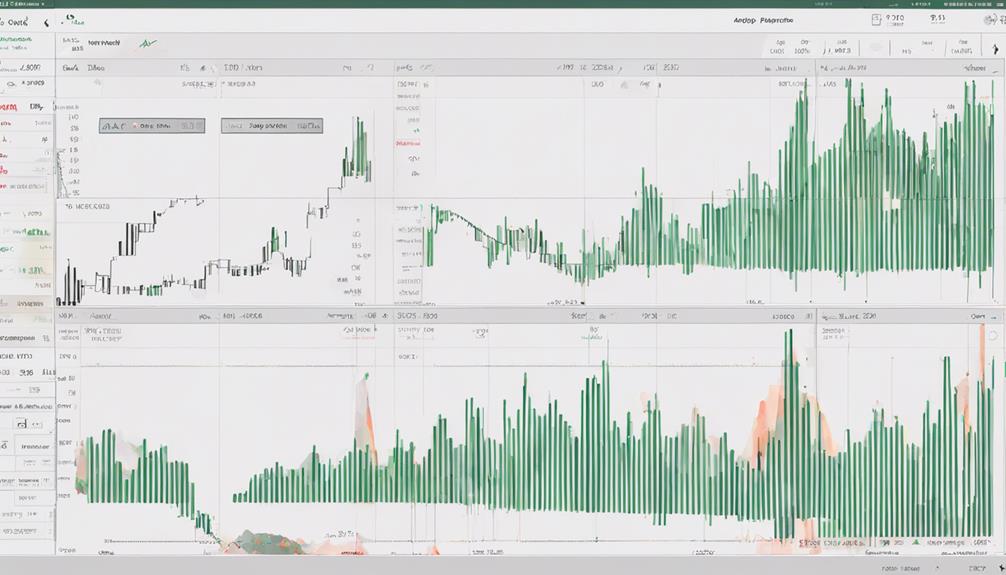
Analyzing the relationship between ADX and Parabolic SAR provides traders with valuable insights into trend strength and potential reversal points in the market. The ADX is calculated by averaging the directional movement over a specific period, offering a numerical representation of trend strength. On the other hand, the Parabolic SAR calculation is based on price highs and lows to identify potential trend reversals and stop-and-reverse points.
ADX values below 20 typically indicate weak trends, while values exceeding 50 suggest robust trends are in play. In contrast, the Parabolic SAR dots switch positions when the price surpasses the indicator, indicating potential changes in trend direction or adjustments in stop-loss levels.
Interpreting ADX & SAR Signals
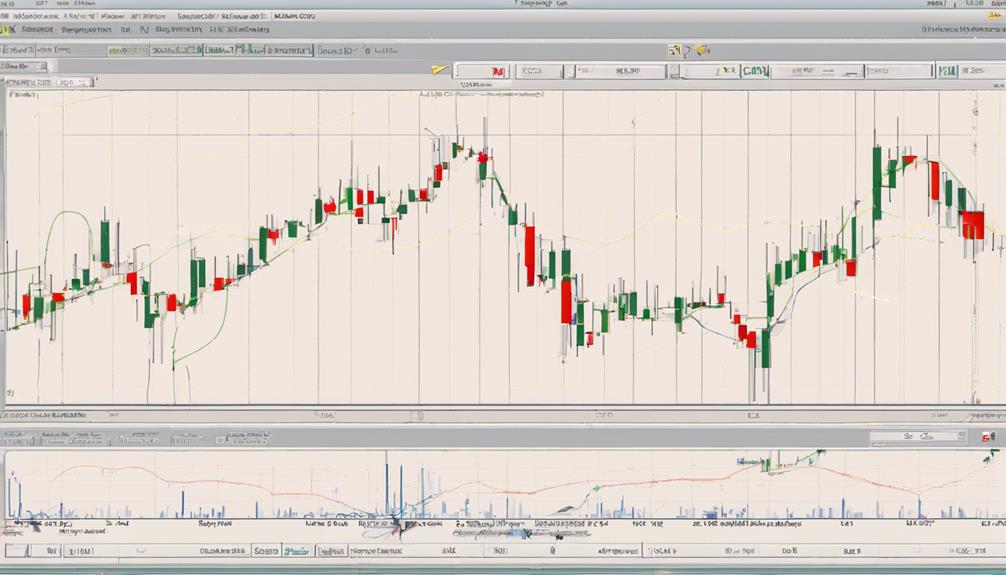
The correlation between ADX and Parabolic SAR provides traders with key insights into trend strength and potential market reversals, enhancing their ability to make informed decisions in the Forex market.
ADX values above 25 signify a strong trend, while values below 20 indicate a weak trend or a sideways market. A rising ADX suggests increasing trend strength, whereas a declining ADX signifies weakening trend momentum.
Combining ADX with Parabolic SAR helps identify potential entry/exit points. Buy signals are triggered when ADX is rising, and the SAR is below the price. Conversely, sell signals are generated when ADX is falling, and the SAR is above the price, indicating a possible trend reversal.
Interpreting ADX and SAR signals is essential for understanding trend dynamics, momentum shifts, and determining effective trading strategies within the market. By analyzing these indicators, traders can make more informed decisions regarding their trades, maximizing their chances of success.
Implementing Trend Following Orders
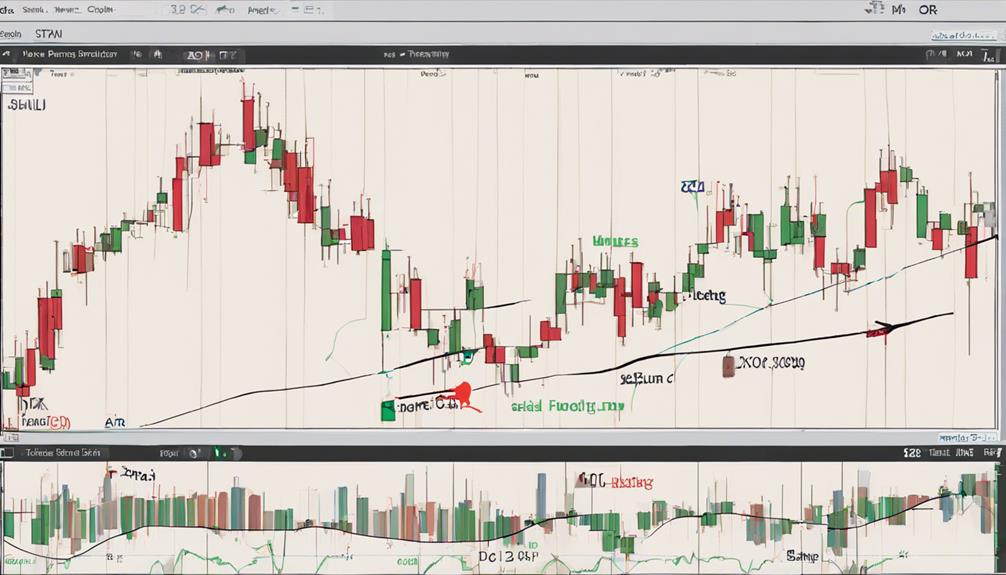
Utilizing trend following orders in the ADX Parabolic SAR strategy involves strategically combining the ADX indicator to confirm trend strength with the Parabolic SAR indicator for precise entry and exit signals.
When trading a currency pair, traders can capitalize on strong trends by placing buy orders when the ADX indicates a robust trend and the Parabolic SAR dots move below the price chart, suggesting a potential uptrend. Conversely, sell orders can be executed when the ADX signals a weakening trend and the Parabolic SAR dots shift above the price chart, indicating a possible downtrend.
These trend following orders are designed to align with established trends confirmed by the ADX and Parabolic SAR, allowing traders to stay in positions longer during favorable movements. Additionally, utilizing the ADX for trend strength evaluation and the Parabolic SAR for dynamic stop-loss placement contributes to effective risk management within the strategy.
Using ADX in MetaTrader 4
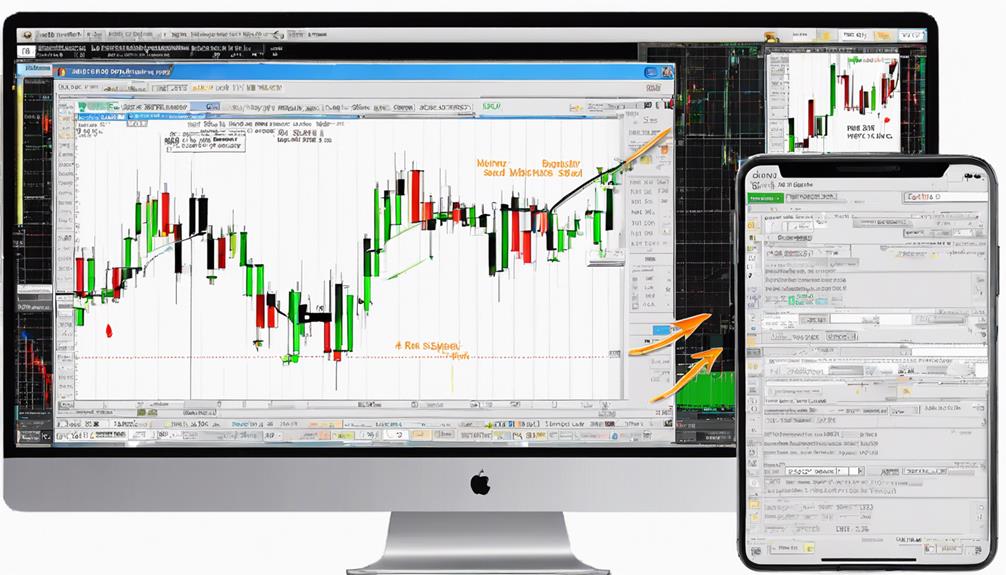
In MetaTrader 4, traders can conveniently access the ADX indicator under the 'Trend' category within the 'Indicators' menu.
By customizing ADX parameters and adjusting SAR settings in MT4, users can tailor these tools to their specific trading preferences.
Understanding how to effectively utilize ADX within the platform can greatly enhance trend analysis capabilities and facilitate more informed trading decisions.
ADX Parameters in MT4
Within the MetaTrader 4 platform, traders can fine-tune trend analysis by adjusting the default 14-day period of the ADX indicator to suit their preferred time horizon. When adjusting ADX parameters in MT4, traders can tailor the indicator to shorter or longer-term trend evaluations.
The ADX indicator in MT4 helps determine the strength of a trend, with values below 20 indicating weak trends and values above 50 indicating strong trends. Utilizing ADX in MT4 enables traders to combine trend strength analysis with Parabolic SAR signals for enhanced trend-following strategies.
MetaTrader 4 provides a user-friendly interface for adjusting ADX parameters and integrating the indicator into trading strategies effectively.
SAR Settings in MT4
To access the Parabolic SAR indicator in MetaTrader 4 for adjusting SAR settings, traders can navigate to the 'Insert' tab, select 'Indicators,' choose 'Trend,' and then opt for 'Parabolic SAR.'
Within MT4, traders can customize the SAR settings by adjusting parameters such as step, maximum step, and shift. These settings allow traders to fine-tune the sensitivity of the indicator to price movements, enhancing its effectiveness in identifying trends.
When combined with the ADX indicator in MetaTrader 4, the Parabolic SAR can form a powerful trend-following strategy. By utilizing the ADX indicator to assess trend strength and integrating it with Parabolic SAR, traders can identify potential entry and exit points with greater precision.
Experimenting with different SAR settings in MT4 is essential for optimizing the performance of the trend-following strategy across various trading instruments, timeframes, and market conditions.
Evaluating ADX Parabolic SAR Pros/Cons
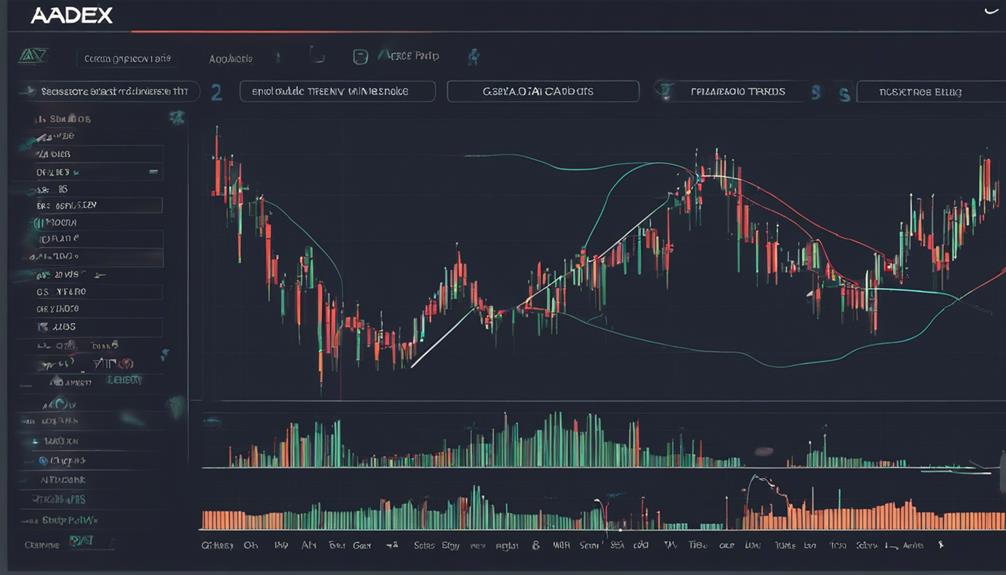
The assessment of the pros and cons of the ADX Parabolic SAR strategy is essential for traders aiming to make informed decisions in different market conditions. When evaluating this strategy, traders should consider the following key points:
- Trend Strength: The combination of the ADX indicator for measuring trend strength and the Parabolic SAR indicator for identifying potential trend reversals provides traders with a detailed view of market dynamics.
- Effective Stop-loss Placement: The strategy offers clear signals for placing stop-loss orders, helping traders manage risk more efficiently and protect their capital in volatile market conditions.
- Potential for Capturing Strong Trending Moves: By focusing on capturing strong trends, the ADX Parabolic SAR strategy can lead to significant profit potential when trends persist, enhancing overall trading performance.
Understanding these pros can help traders leverage the strategy effectively. However, it is important to be aware of the potential for false signals in ranging markets and the importance of additional confirmation tools and risk management techniques to mitigate risks and optimize performance in various market conditions.
Optimal SAR Indicator Settings

Using ideal SAR indicator settings is crucial for enhancing the effectiveness and precision of the Parabolic SAR strategy in trading environments. Optimal Parabolic SAR settings typically involve an initial factor of 0.02, a price step of 0.02, and a maximum acceleration factor of 0.20. By adjusting the acceleration factor (AF), traders can fine-tune the sensitivity of the Parabolic SAR indicator to price movements.
Different AF values allow for customization based on market conditions and individual trading preferences. These settings are versatile across various timeframes, offering reliable trend signals. Traders can experiment with AF values to strike a balance between sensitivity and responsiveness, thereby optimizing the Parabolic SAR strategy's performance.
Customizing the AF values enables traders to control the Parabolic SAR's stop and reverse levels effectively, enhancing decision-making and risk management in currency trading. This approach ensures that the Parabolic SAR indicator aligns with the trader's risk appetite and market conditions for improved trading outcomes.
ADX Parabolic SAR Trading Strategies
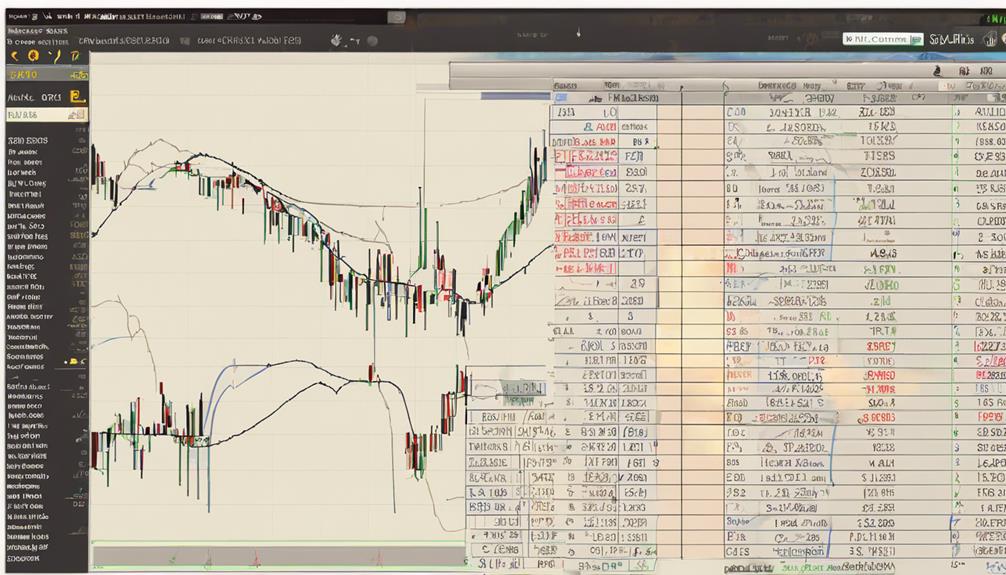
By combining trend strength analysis from the ADX indicator with trend reversal signals generated by the Parabolic SAR indicator, traders can implement a robust ADX Parabolic SAR trading strategy for enhanced decision-making and improved trading accuracy. This strategy provides clear buy/sell signals based on the interaction between the two indicators, offering traders opportunities to enter and exit the market at ideal points.
Here are three key aspects of ADX Parabolic SAR trading strategies:
- Identification of Trend Strength: ADX helps traders assess the strength of a trend, allowing them to focus on high-probability trades with significant momentum.
- Recognition of Trend Reversal: Parabolic SAR assists in identifying potential trend reversals, indicating ideal entry and exit points for trades.
- Enhanced Decision-Making: By combining these indicators, traders can make more informed decisions, leading to improved trading accuracy and overall profitability.
Real-Time EURUSD Price Chart
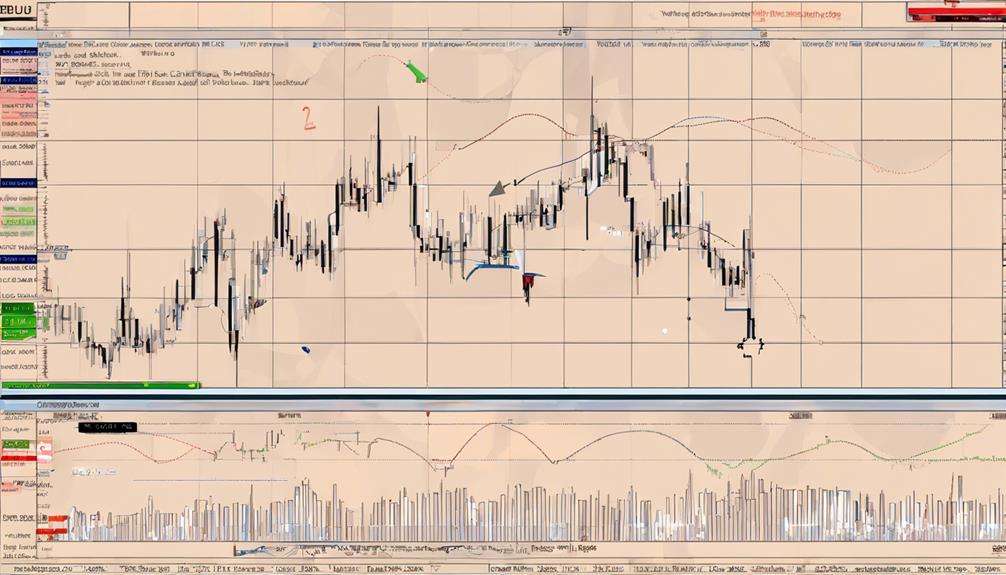
Analyzing real-time EURUSD price charts involves employing chart analysis techniques to interpret trading signals effectively. Traders rely on these charts to identify key price levels, trends, and patterns that can guide their decision-making process.
Utilizing the information derived from real-time charts is essential for implementing successful trading strategies like the ADX Parabolic SAR method in the dynamic forex market.
Chart Analysis Techniques
How can real-time EURUSD price movements be effectively analyzed to identify trends using candlestick patterns and trend lines? When analyzing the EURUSD chart for trend identification, traders can employ various chart analysis techniques. Here are some key methods that traders can utilize:
- Candlestick Patterns: Look for patterns such as engulfing candles or doji candles to signal potential trend reversals or continuations.
- Trend Lines: Draw trend lines connecting swing highs or lows to visualize the direction of the trend and potential areas of support or resistance.
- Support and Resistance Levels: Identify key price levels where the EURUSD pair has historically struggled to break above (resistance) or below (support) in order to anticipate potential price movements.
Trading Signals Interpretation
Upon observing the real-time EURUSD price chart, interpreting trading signals derived from the placement of Parabolic SAR dots relative to the price chart can provide valuable insights for making informed trading decisions.
When the Parabolic SAR dots lie below the price chart, signaling an uptrend in real-time trading, traders may opt to trail their positions with the Parabolic SAR to maximize profits during upward trend movements.
Conversely, the appearance of Parabolic SAR dots above the price chart may indicate a potential trend reversal, necessitating caution to adjust risk management strategies promptly.
Monitoring the proximity of the Parabolic SAR dots to the price chart is essential for identifying possible trend reversals and implementing timely trading actions to adapt to changing market conditions.
Frequently Asked Questions
How to Use Parabolic SAR With Adx?
To effectively use Parabolic SAR with ADX, traders can utilize Parabolic SAR dots for entry signals and exit strategies, while ADX helps in trend identification and managing market volatility.
Implementing a stop loss based on the Parabolic SAR signals can aid in risk management.
Additionally, considering position sizing relative to the strength of the trend, as indicated by ADX values, is essential for maximizing potential profits and minimizing losses in trading scenarios.
What Timeframe Is Best for Parabolic Sar?
When considering the best timeframe for utilizing the Parabolic SAR indicator, traders must weigh the advantages of short-term analysis for intraday trading or scalping strategies against the benefits of long-term perspective for swing trading or trend identification.
Longer timeframes like daily or weekly charts are suitable for capturing major trends but may sacrifice the real-time volatility analysis available in shorter timeframes such as 1-hour or 4-hour charts.
Balancing signal accuracy and frequency is vital for effective trend capture.
How to Understand Parabolic SAR Indicator?
Understanding the Parabolic SAR indicator involves recognizing its role in trend identification, reversal signals, and volatility measurement. Traders utilize SAR dots for entry points, exit strategies, and stop-loss placements, enhancing risk management.
Is Parabolic SAR Profitable?
Parabolic SAR can be profitable with proper application and understanding of trading psychology, risk management, and market conditions. Backtesting results can help assess profitability, while adapting entry signals and exit strategies based on trade analysis enhances success.
Traders combining Parabolic SAR with ADX often achieve profitability by identifying trends. However, success depends on managing risks effectively and recognizing limitations in choppy markets. Adjusting parameters based on market conditions is essential for maximizing profitability.
Conclusion
To sum up, mastering the market with the ADX Parabolic SAR strategy requires a deep understanding of the indicators, calculations, and signals involved. By following a systematic approach and optimizing settings, traders can effectively utilize this strategy to make informed decisions.
For example, a trader who successfully implemented the ADX Parabolic SAR strategy saw a significant increase in profitability and minimized risk in their trading portfolio, showcasing the strategy's potential for success in the market.
